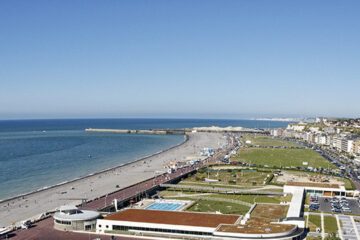Sommaire
This correction seems simple but must be very precise in case we need to work on the perspective.
Cases where it is not necessary to correct the horizon
* When the photographer has intentionally applied an important angle while shooting
There must be no ambiguity about the original intention so that correcting does not make any sense. This is a common case in action photo reports and street photos where spontaneity generally prevails.
* If there is no horizontal mark present in the frame
This is a common case for indoor shots taken downward or low angle shots. The vertical should be aligned with the main subject, even if it is off-center. One rarely corrects the perspective in this situation, which does not preclude volume deformation correction.
* When there are no horizon references or exact verticals in the image
It is common in the forest that trees lean slightly in the same direction, but this is perceived more naturally than a corrected image with vertical trees.
The cases where correcting the horizon is essential
Virtually all other cases and especially:
* When the frame has a pure horizontal (in particular seascapes)
* The photograph of architectural elements (cityscapes, monuments, etc …)
* If the subject is mirrored according to a natural horizontal plane (water plane, reflecting surface)
* When the next step is to manually correct the perspective (see chapter)
TuToDxO.com – All rights reserved – tous droits réservés.


